Puerto rico facts: 42 Facts About Puerto Rico (Things to Know, By a Local)
42 Facts About Puerto Rico (Things to Know, By a Local)
Puerto Rico is a Caribbean paradise that attracts visitors from all around the world.
Although you might’ve heard about its beaches, or its tropical rainforest (the only one in the US National Forest System), there is a lot more to Puerto Rico than meets the eye!
As a Puerto Rico local, I am proud to share these 42 facts you should know about Puerto Rico.
Table of Contents
- 42 Fun & Interesting Facts About Puerto Rico
- 1. Puerto Rico Isn’t an Island (It’s Several)
- 2. Puerto Rico is a Territory
- 3. Puerto Ricans Have the US Citizenship
- 4. Puerto Ricans Don’t Vote in US Elections
- 5. Puerto Ricans Have their Own Citizenship
- 6. Puerto Rico is Still a Colony
- 7. US Citizens Don’t Need a Passport
- 8. Puerto Rico Has Two Official Languages
- 9. Cristopher Columbus Wasn’t the First to Arrive
- 10. The Island’s Name Was Formerly “San Juan Bautista”
- 11.
 San Juan Wasn’t Always the Capital City
San Juan Wasn’t Always the Capital City - 12. Puerto Ricans are a Mix of Races
- 13. The Island Has a Hurricane Season
- 14. There is Also a Dry Season
- 15. Puerto Rico Claims the Only Rainforest in the USA
- 16. The Island Is Home to Top World Beaches
- 17. The World’s 3rd Largest Cave Network is in Puerto Rico
- 18. And the Deepest Point of the Atlantic Ocean Too
- 19. The Highest Point is Cerro de Punta
- 20. There are Three Bioluminescent Lagoons
- 21. Vieques Features the Brightest Bio Bay in the World
- 22. The US Navy Used Vieques as a Base
- 23. There is a Forbidden Island
- 24. Puerto Rico is Home to the First Nuclear Plant in the Caribbean
- 25. Puerto Rico is the Base of the Largest Rum Distillery in the World
- 26. Puerto Rico Has The Oldest Operating Executive Mansion in America
- 27. Speaking of Governors, the First Governor is in San Juan
- 28. San Juan Features Some of the Oldest Churches in America
- 29.
 Some of the Streets Have Original Cobblestones
Some of the Streets Have Original Cobblestones - 30. San Juan is One of the Busiest Ports
- 31. Castillo San Cristobal is the Biggest Fort
- 32. You Can Celebrate the Oldest Carnival in the West Hemisphere
- 33. The Island Had its Own Pirate
- 34. Puerto Rico Sports the Tallest Statue in the Americas
- 35. And Also the Most Stunning Beauties
- 36. Puerto Rico Does Not Follow Daylight Saving
- 37. Puerto Ricos Uses Both the Imperial and Metric Systems
- 38. Puerto Ricans Made a Governor Resign
- 39. Puerto Rico Celebrates the Longest Christmas in the World
- 40. Puerto Ricans Call Themselves “Boricuas”
- 41. Puerto Rico’s Flag Is an Important Symbol
- 42. Puerto Ricans Are (Over) Friendly
Disclosure: Travel Lemming is an independent reader-supported blog. You can support us by purchasing via the affiliate links on this page, which may earn us commissions. Thank you!
1.
 Puerto Rico Isn’t an Island (It’s Several)
Puerto Rico Isn’t an Island (It’s Several)
Puerto Rico is an archipelago that consists of a main island surrounded by smaller islands and cays. Two of the largest Puerto Rico islands, Vieques and Culebra, are also home to two of of the best towns in Puerto Rico. Other smaller islands like Mona Island, Gilligan’s Island, Isla Palomino, and Caja de Muertos are reserves used for investigation and leisure.
📚 Related Reading: Top Things to Do in Puerto Rico
2. Puerto Rico is a Territory
Although Puerto Rico has its own government and sovereignty, Puerto Rico has been a territory of the United States since 1898, when the United States invaded the island during the Spanish American War and Spain signed the Treaty of Paris to cede Puerto Rico, Guam, and the Philippines to the United States. This treaty declared Puerto Rico an unincorporated territory. Source.
3. Puerto Ricans Have the US Citizenship
With the Jones-Shafroth Act created in 1917, Puerto Ricans received United States citizenship for the first time since the arrival of the United States after winning the Spanish American war.
4. Puerto Ricans Don’t Vote in US Elections
Puerto Ricans are US citizens and, yet, they can’t vote in the US Presidential General Election or the US Congress unless they’ve moved permanently to the United States.
5. Puerto Ricans Have their Own Citizenship
For being a commonwealth, Puerto Rico’s inhabitants have both US citizenship and Puerto Rican citizenship. Foreigners can acquire Puerto Rico’s citizenship too. Juan Mari Brás was the first person to receive Puerto Rican citizenship, after a complex trial in which he resigned from US citizenship, but claimed to be a Puerto Rico citizen. Source.
6. Puerto Rico is Still a Colony
Ever since Christopher Columbus arrived in Puerto Rico in 1493, and claimed it as a colony of Spain, the island was never a free country. Although Spain gave autonomy to Puerto Rico by the end of 1897, in May 1898, the United States invaded the island. Today, Puerto Rico is a U.S. territory.
📚 Bookmark for Later: Places to Visit in Puerto Rico
7.
 US Citizens Don’t Need a Passport
US Citizens Don’t Need a Passport
Do you need a passport to go to Puerto Rico?
Since Puerto Rico is an unincorporated territory of the United States, if you’re an American citizen and are traveling from within the US, you don’t need a passport or any additional visa to visit and stay in Puerto Rico.
But, while you might not need a passport, there are a lot of other things you should pack for Puerto Rico (read that post for my full list!).
8. Puerto Rico Has Two Official Languages
According to the Constitution of Puerto Rico, the country sports two official languages, Spanish and English, although this is more a written paper than truth. Even though English is part of public education, a relatively low percentage of the population speaks English. Source.
9. Cristopher Columbus Wasn’t the First to Arrive
Although history says Spanish explorer Christopher Columbus discovered Puerto Rico in 1493 the island was already inhabited by Tainos, the indigenous people of the Caribbean.
10. The Island’s Name Was Formerly “San Juan Bautista”
Puerto Rico’s name changed multiple times under the Spanish empire. When the Spaniards first arrived on the island, the Taino called it Boriken. Christopher Columbus renamed the island San Juan Bautista.
Later, the governor Juan Ponce de León named the capital Puerto Rico. Eventually, the names got flipped.
Also, Borikén became Borinquen, a name that is still used today.
11. San Juan Wasn’t Always the Capital City
The original capital of Puerto Rico was Caparra, an area between Guaynabo and Bayamón, but for its exposed and non-central location, it moved to Old San Juan.
👉 Read Next: The Top Things to do in San Juan
12. Puerto Ricans are a Mix of Races
Puerto Ricans include a mix of Taino, Spanish, African, and American races. Puerto Rico is filled with diversity, which you can see not only in the people, but also in their music, their local food, and their customs.
13. The Island Has a Hurricane Season
Although Puerto Rico doesn’t have four defined seasons like the United States, it does have a rainy season parallel with the hurricane season in Puerto Rico that goes from late June to November. During this season not only does it rains more, but the island is prone to suffering the impacts of tropical storms and hurricanes.
14. There is Also a Dry Season
The best time to visit Puerto Rico for dry weather is from December to May. During this period it rains less and there isn’t any risk of hurricanes.
15. Puerto Rico Claims the Only Rainforest in the USA
El Yunque National Forest is the only rainforest in the United States and it’s home to 183 animal species and 225 tree species.
See my full guide to how to go to El Yunque to get planning your visit!
16. The Island Is Home to Top World Beaches
Puerto Rico offers visitors beautiful beaches, one of the top being Flamenco Beach in Culebra.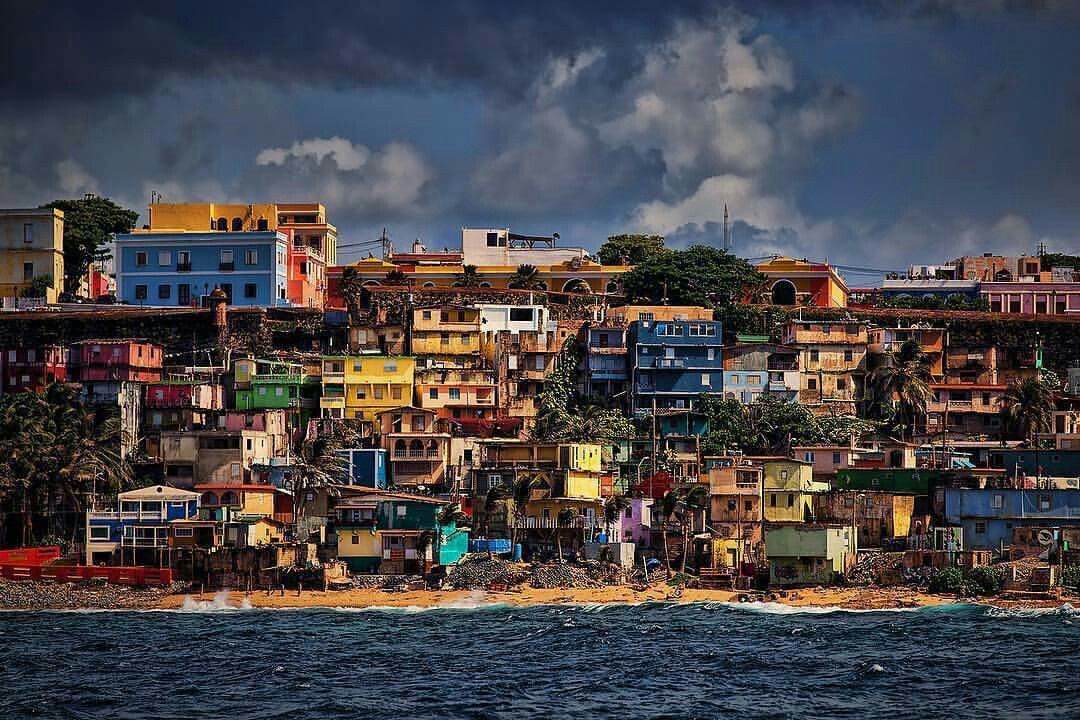 This beach is one of the top ten in the world for its white sands and turquoise waters. On the beach, there is a military tank from the time the US military occupied the island. Source.
This beach is one of the top ten in the world for its white sands and turquoise waters. On the beach, there is a military tank from the time the US military occupied the island. Source.
👉 Love Beaches? Check out the Top Beaches in Puerto Rico.
17. The World’s 3rd Largest Cave Network is in Puerto Rico
Puerto Rico is home to an impressive cave system, formed by the Camuy River, the third-largest underground river in the world. The Caverns of Rio Camuy as they’re called, are the third-largest cave system in the world, and the biggest in the West Hemisphere. Source
18. And the Deepest Point of the Atlantic Ocean Too
Up the north Atlantic Ocean, you’ll find the Puerto Rico Trench, the deepest point of this ocean, with water depths over 8,400 meters. Source
19. The Highest Point is Cerro de Punta
Cerro de Punta is a mountain located between Jayuya and Ponce, part of the central mountainous area and it’s the highest peak of Puerto Rico, with 1338 meters or 4, 389 feet over sea level.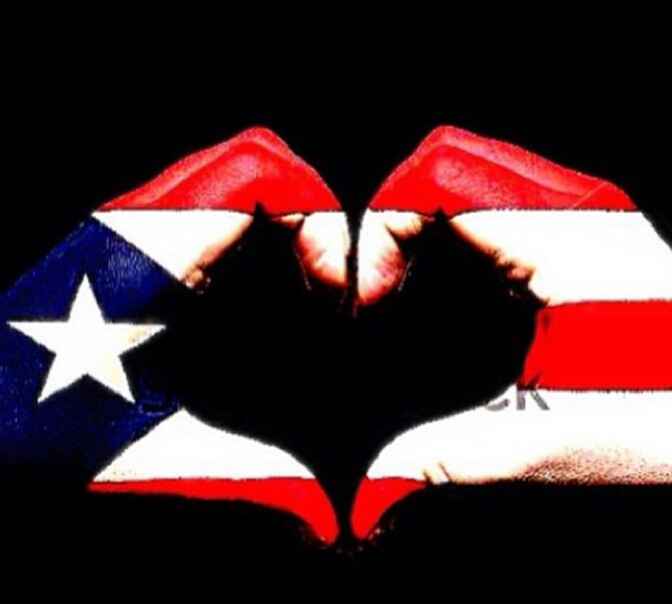
20. There are Three Bioluminescent Lagoons
Bioluminescence is quite a strange phenomenon and yet you can find three bioluminescent bays in Puerto Rico: in La Parguera in Lajas, Laguna Grande in Fajardo, and Mosquito Bay in Vieques Island.
👉 Read Next: The Best Things to Do in Fajardo
21. Vieques Features the Brightest Bio Bay in the World
Talking about bio bays, Mosquito Bay in Vieques holds the Guinness Record for the brightest bioluminescent bay in the world, for its high concentration of dinoflagellates that glow when disturbed. Source.
22. The US Navy Used Vieques as a Base
The US Navy used Vieques as a naval base for bombings and military training for more than 50 years until the accidental death of a civilian sparked protests that led to the exit of the Navy from Vieques in 2003. Source.
23. There is a Forbidden Island
Desecheo Island, one of Puerto Rico’s islands, is off-limits to visitors since it got used as a training and test field by the United States’ Navy and today it still has explosive munitions. Visitors can only visit Desecheo Island’s coast. Source.
Visitors can only visit Desecheo Island’s coast. Source.
24. Puerto Rico is Home to the First Nuclear Plant in the Caribbean
BONUS seen from Punta Higueras Park
Puerto Rico was home to the first nuclear facilities in Latin America. The BONUS Nuclear Plant was built in the early 1960s and it operated from 1964 to 1968. It was the eighth nuclear plant in the world and it was a prototype to test a form of nuclear energy. Today it’s a museum open to the public through previous reservations. Source.
25. Puerto Rico is the Base of the Largest Rum Distillery in the World
If you’ve ever tasted alcohol, then chances are you’ve heard about Bacardí Rum. Bacardí originated in Cuba and established facilities in Puerto Rico in 1930. After the Cuban Revolution, Bacardí continued its operations in Cataño, Puerto Rico, where you can now find the largest distillery in the world.
26. Puerto Rico Has The Oldest Operating Executive Mansion in America
La Fortaleza was one of the first fortifications built in Puerto Rico back in 1540 to protect the capital. In 1846 it got remodeled and since then it’s been housing governors of Puerto Rico. Up to today La Fortaleza or Palacio de Santa Catalina has been the home of 170 governors and it’s the oldest executive mansion in continuous use in America.
In 1846 it got remodeled and since then it’s been housing governors of Puerto Rico. Up to today La Fortaleza or Palacio de Santa Catalina has been the home of 170 governors and it’s the oldest executive mansion in continuous use in America.
27. Speaking of Governors, the First Governor is in San Juan
Juan Ponce De Leon is one of the most famous Spanish explorers and the first governor of Puerto Rico. His remains are inside Catedral de San Juan.
28. San Juan Features Some of the Oldest Churches in America
Old San Juan is a city with 500 years of history and some of the structures in the city sport almost the same age. Iglesia de San José built in 1522 is the second oldest church structure in the American continent. The San Juan Cathedral’s original structure was built in 1521, but it was rebuilt in 1540.
📚 Related Reading: Top Things to Do In San Juan
29. Some of the Streets Have Original Cobblestones
The streets of San Juan are famous for many reasons. One of them is for the beautiful cobblestones that Spaniards used to pave the streets. You can still see some of the original ones in some streets of Old San Juan.
One of them is for the beautiful cobblestones that Spaniards used to pave the streets. You can still see some of the original ones in some streets of Old San Juan.
30. San Juan is One of the Busiest Ports
Every year around 1.6 million tourists arrive at San Juan city through the cruise ports. San Juan receives over 500 cruises yearly, which is why it’s considered one of the busiest cruise ports in the world. Source.
31. Castillo San Cristobal is the Biggest Fort
Castillo San Cristobal in Old San Juan is the largest fortification built on the American continent. This impressive fort took more than 150 years to build and even the United States contributed to its structure during WWII. Source.
32. You Can Celebrate the Oldest Carnival in the West Hemisphere
Historians believe the Ponce Carnival is one of the oldest carnivals in the West Hemisphere. One of Puerto Rico’s top festivities, the Ponce Carnival dates back to 1858 and it takes place every year one week before Ash Wednesday.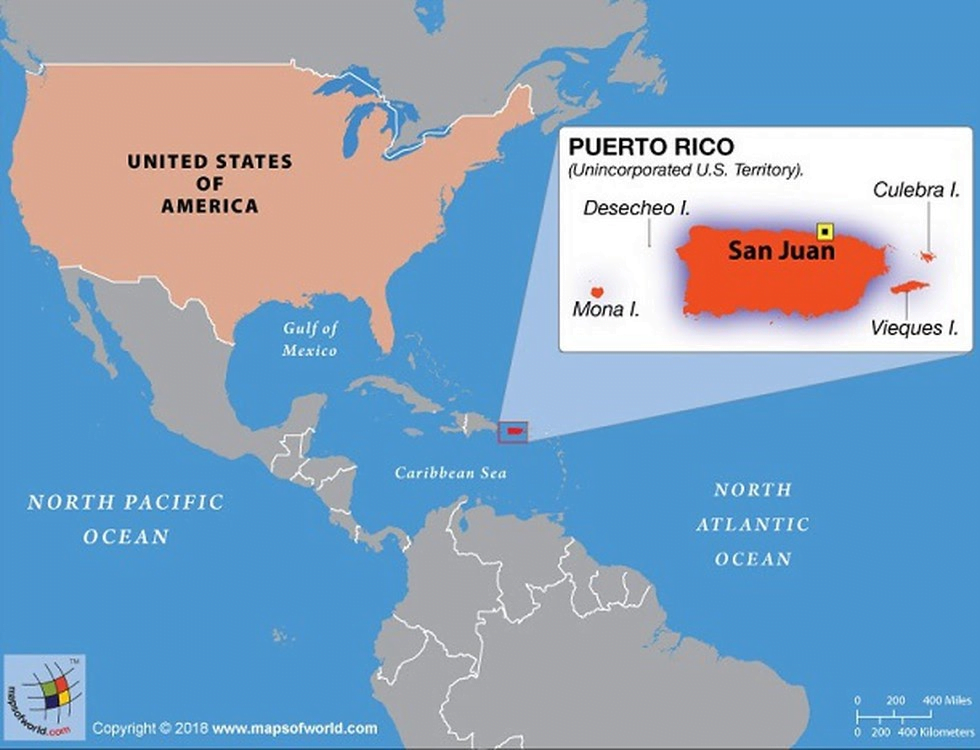 Source
Source
33. The Island Had its Own Pirate
Although stories about pirates might seem out of a movie, Puerto Rico did have a pirate known as Roberto Cofresí. The legend says this famous pirate attacked ships and distributed the earnings among the poor. Many locations in Puerto Rico got their name after him. It’s said he got buried on the shore next to Old San Juan’s cemetery, where many famous Puerto Ricans are. Source.
34. Puerto Rico Sports the Tallest Statue in the Americas
If you’re looking for the tallest statue of the Americas, then look no further than Arecibo, Puerto Rico. The sculpture, named The Birth of a New World, is a tribute to Christopher Columbus and his trips to the Americas. Its size is over 200 feet.
35. And Also the Most Stunning Beauties
Even if it’s a commonwealth, Puerto Rico competes in the Miss Universes contest as an independent country. During the history of the contest, Puerto Rico has won the title of Miss Universe five times.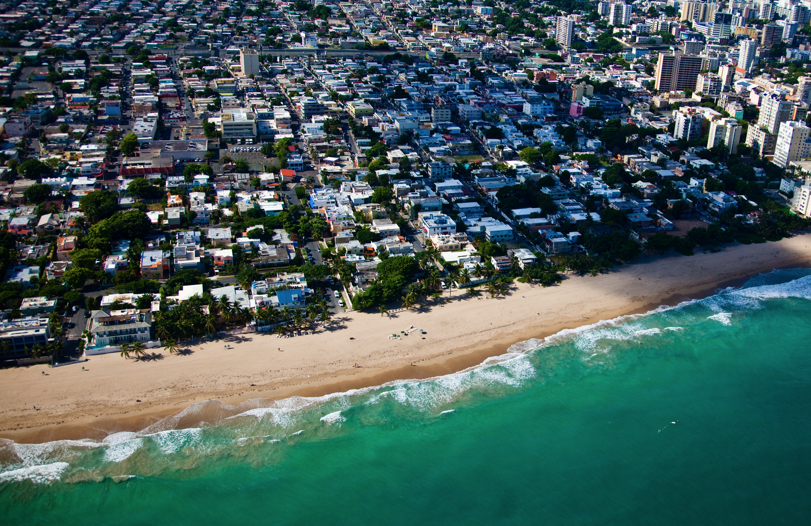
36. Puerto Rico Does Not Follow Daylight Saving
The island doesn’t follow Daylight Saving Time, which means the hour doesn’t change in the winter as everywhere else in the United States.
37. Puerto Ricos Uses Both the Imperial
and Metric Systems
Something very confusing about the measurements in Puerto Rico is that the country uses both the Metric and Imperial systems. The Metric system is mostly used to measure distances, but speed gets measured in miles per hour. Gas also gets measured in liters but other liquids like water and milk get measured in gallons.
38. Puerto Ricans Made a Governor Resign
Protests of 2019
Back in 2019, a controversial private chat conversation between the governor and a group of other politicians became public and sparked the ire in the country. Protests got held in front of La Fortaleza for more than a week, ending up in the resignation of a governor for the first time in history.
39. Puerto Rico Celebrates the Longest Christmas in the World
Puerto Ricans are famous for their liveliness and party spirit. That’s why Christmas in Puerto Rico lasts longer than in any other country. Christmas originally started after Thanksgiving, and lasted until late January, after the Fiestas de la Calle San Sebastián. This year cities are doing their official Christmas activities from October 30.
That’s why Christmas in Puerto Rico lasts longer than in any other country. Christmas originally started after Thanksgiving, and lasted until late January, after the Fiestas de la Calle San Sebastián. This year cities are doing their official Christmas activities from October 30.
40. Puerto Ricans Call Themselves “Boricuas”
It’s not uncommon to hear the term Boricua in Puerto Rico. It’s a term Puerto Ricans use to identify and define themselves, and it derives from the original country’s name, Boriken. You’ll also hear it in the phrase, “You soy Boricua, pa’ que tú lo sepa’”.
41. Puerto Rico’s Flag Is an Important Symbol
Puerto Rico’s flag is a symbol of pride for the island. Here is what it means (officially): the triangle represents the government’s three branches, while the star represents the Commonwealth. The red stripes represent blood nourishing the three branches, and the white stripes stand for liberty. Learn more in my complete guide to the flag of Puerto Rico.
42. Puerto Ricans Are (Over) Friendly
Puerto Ricans love to make visitors feel welcomed and to help them, but many visitors could have a culture shock since Puerto Ricans salute with hugs and kisses even the people they just met. They also use the informal form of Spanish to address everyone, regardless of age, status, or gender. It’s a cultural thing.
👉 Read Next: Is Puerto Rico a Safe Place to Travel Now?
***
That’s the end of 42 facts about Puerto Rico!
Before you go, continue reading about the top activities you can do on the island!
How useful was this post?
Click on a star to rate (you can leave feedback after clicking submit)
Help us help you travel better!
Your feedback really helps …
What did you like about this post? Or how can we improve it to help you travel better?
Puerto Rico Facts for Kids in 2022 (Fun & Interesting)
Please email or share this article!
Email
FB
Puerto Rico is a Caribbean island and U.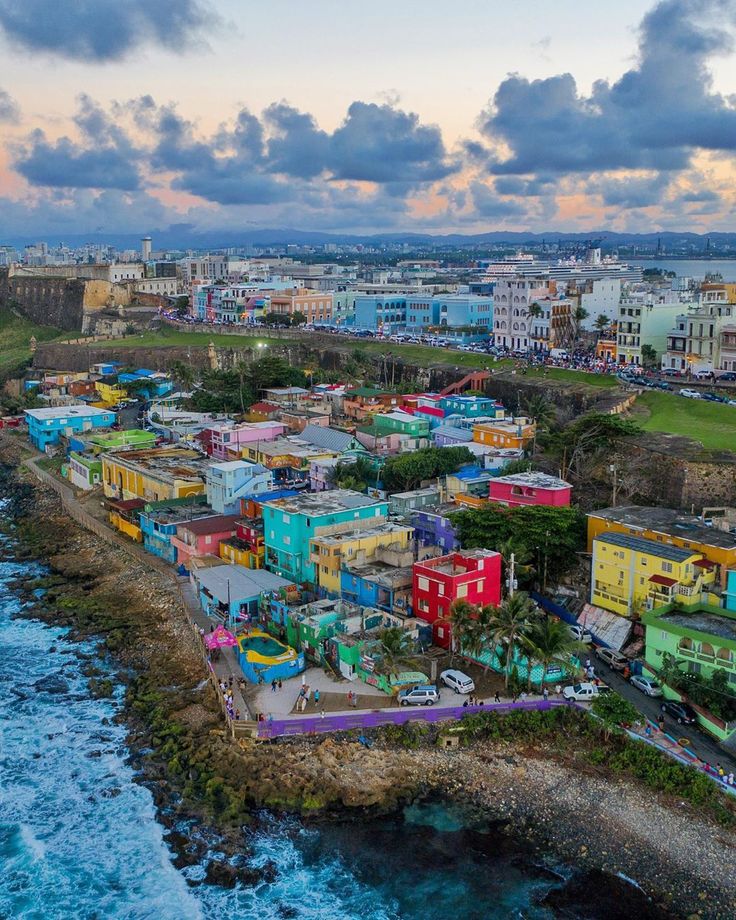 S. territory with a landscape of mountains, waterfalls, and tropical rainforest.
S. territory with a landscape of mountains, waterfalls, and tropical rainforest.
Puerto Rico is known for its beautiful beaches and Spanish Caribbean culture with an American twist.
Bright, colorful homes line the coast, while American fast food chains can be found in larger cities like San Juan.
Puerto Rico is an interesting blend of cultures with a rich history.
Quick Facts
Capital of Puerto Rico: San Juan
Population: 3.5 million
Nickname: Island of Enchantment
Original Name: San Juan Bautista
Can you spot Puerto Rico on the map?
Key Cities: San Juan, Bayamón, Carolina, Ponce, Caguas
Postal Abbreviation: PR
Major Industries: Manufacturing, finance, real estate, tourism
History of Puerto Rico
How did Puerto Rico get its name: When Christopher Columbus arrived in Puerto Rico in 1493, he originally called the island San Juan Batista.
Soon, the island became known as Puerto Rico (“rich port” in Spanish) instead because of the gold that could be found in its rivers and streams. The capital city took the name San Juan instead.
Date admitted to the Union: Puerto Rico became a U.S. territory in 1898, following the Spanish-American War. On March 2, 1917, Puerto Ricans were granted U.S. citizenship.
San Juan is the oldest European city under the American flag, and Puerto Rico is the world’s oldest colony. Since Christopher Colombus “found” the island in 1493, Puerto Rico has been a colony.
Geography
The country of Puerto Rico is the smallest island of the Greater Antilles Archipelago found in the Caribbean. It is located east of the Dominican Republic.
What is the size of Puerto Rico: 3,515 sq. miles (9,104 km2)
Lowest point: Caribbean Sea at sea level
Highest point: Cerro de Punta at 4,553 ft.
Counties: 78 (called municipalities or “municipios”)
Famous locations: El Yunque National Forest, Old San Juan, El Morro, La Fortaleza, San Juan Cathedral
Languages of Puerto Rico
Being an Unincorporated Territory of the United States, the official languages are English and Spanish. “Spanglish” can commonly be heard as well due to the influence of the United States on the native Spanish speakers.
“Spanglish” can commonly be heard as well due to the influence of the United States on the native Spanish speakers.
Currency of Puerto Rico
Puerto Ricans use the U.S. dollar, but they often refer to it as the “peso” or “dolar.”
Famous Puerto Ricans
Ricky Martin- singer
Jennifer Lopez- singer/actress
Benicio del Toro- actor
Roberto Clemente- baseball player
Carlos Beltran- baseball player
Rita Moreno- actress
Weather in Puerto Rico
Puerto Rico boasts a warm and tropical climate often common in the tropics. Temperature ranges from 70 to 80 degrees Fahrenheit year-round. Occasionally in the summer, there are some afternoon showers.
Population
The population of Puerto Rico is estimated to be around 3.6 million people. With another 5 million Puerto Ricans living in the United States.
Puerto Rico is one of the world’s most densely populated islands (most people per square mile).
People and Culture
The heritage of native Puerto Ricans is a mixture of Taíno Indian, African, and European (mostly Spanish).
Yuca a potato-like vegetable was brought by the Taino Indians. The Africans bought plantains and the Spanish brought their rice.
Lechón which is a roasted Pork dish, rice, and beans, mofongo which is mashed fried plantains, and fried empanadas, and alcapurrias make up the most popular dishes on the island.
Fruits such as Guava, Mango, Pineapple, Passion-Fruit, and Tamarind are used and eaten commonly.
Flora, Fauna, and Topography
There is a rich variety in the plants and animals found on the island. The northern side of the Islands is covered in Tropical Rainforests whereas scrub vegetation is found on the southern side of the island.
The royal poinciana flower and the African tulip tree are among the flowering trees which cover the mountain ranges of Puerto Rico with patches of vivid color against a rich green tree line.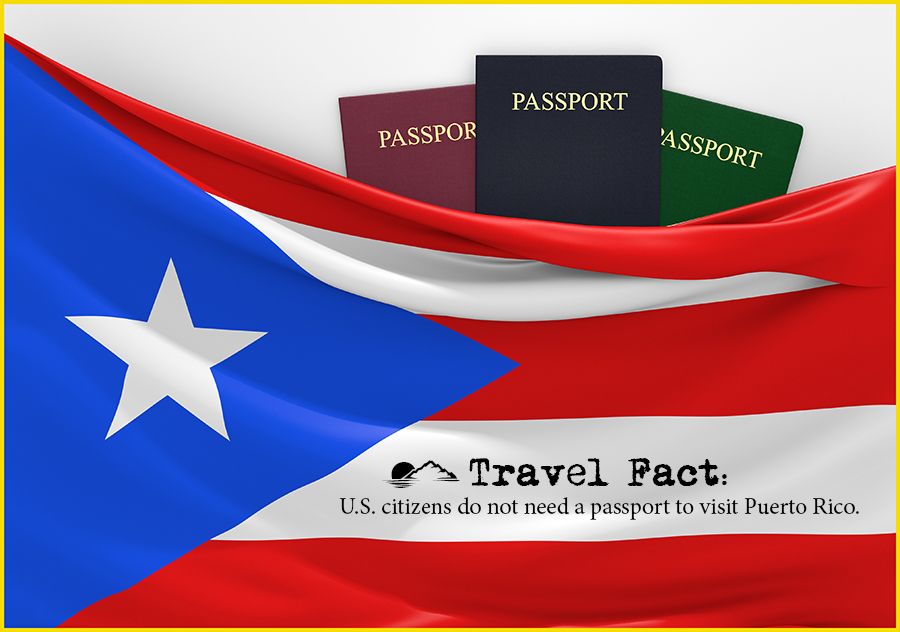
The islands are also home to a rich variety of birds. Land animals such as snakes, lizards, mongooses, and the coqui are predominant.
The coqui is a small frog that can be found only in Puerto Rico. It’s about an inch long and makes a unique, high-pitched song: “ko-kee, ko-kee,”, especially at night.
The frogs are a beloved symbol of Puerto Rico.
The seas also boast a rich aquatic life but commercial fishing is carried out only at a limited scale.
Alcohol in Puerto Rico
The legal drinking age in Puerto Rico is only 18 years old.
It is also home to the most extensive Rum Factory in the world, Casa Bacardi.
The popular Pina Colada was invented in Puerto Rico
The Beaches and Caves of Puerto Rico
The island has more than 270 miles of beaches.
Flamenco beach, in the region of Culebra, has been ranked as one of the Top 10 beaches in the world.
For visitors who get tired of the beautiful beaches (if that’s possible), there are also over 200 caves to explore in Puerto Rico’s Rio Camuy Cave Park.
Experts believe there are still hundreds of undiscovered caves on the island.
Government
Being neither a State nor a Country but an organized, unincorporated territory of the United States means Puerto Ricans has its own government. That is, Puerto Ricans can elect their own governor and members of their Senate and House of Representatives to make laws.
They cannot vote for the US President but instead, vote for a Representative called a Resident Commissioner who speaks on behalf of Puerto Rican interests in the US Government.
Fun Facts
- Puerto Rico is one of the world’s most densely populated islands (most people per square mile).
- It’s about the size of Connecticut, the 3rd smallest U.S. state, and is home to over 3.5 million people.
- Barceloneta in Puerto Rico is famous for its blue beaches and pineapple plantations, earning it the nickname “Pineapple City.”
- It also has one of the biggest pharmaceutical complexes in the world.

- That’s because the water is so pure it can be used in pharmaceutical products with almost no treatment (a process that improves the quality of the water).
- Puerto Rico has produced five Miss Universe winners.
- Puerto Rico is an archipelago, which means there will be many islands to admire during your travels.
- It features a “wild west coast” with some of the best surfing and diving in the Caribbean, according to legend.
- Although residents of Puerto Rico are U.S. citizens, Puerto Rico is technically not a state, so Puerto Ricans don’t vote in U.S. elections.
- You don’t need a passport to travel to Puerto Rico, and residents of the island can also travel freely to the United States.
- Weather is around 75 degrees throughout the year, which makes it a great place to travel to anytime.
- The Arecibo Observatory, the world’s 2nd largest telescope, is located here.
- In Puerto Rico, you drive on the right side of the road, but the signs are in Spanish and gas is measured in litres.

- The streets are strewn with blue cobblestones, which give the area a beautiful feel
- On the way to ‘Salta de Doa Juana,’ there is a massive 120-foot waterfall with crystal clear water, where waterfall photos are encouraged but diving is not!
US States
20 facts about Puerto Rico – GeograFishka.ru
Is Puerto Rico a state and where did it come from? What are the main food-related tourist attractions in Puerto Rico? What tips should you use to get around the island?
By answering these questions, you can have a great vacation in the Caribbean. Here are twenty things you need to know about Puerto Rico.
1. Puerto Rico is not a state
Puerto Rico’s politics are strange to say the least. Puerto Rico is not a state, but a commonwealth within the United States. This means that US citizens can travel to the islands without a passport.
This also means that the federal government has jurisdiction over Puerto Rico.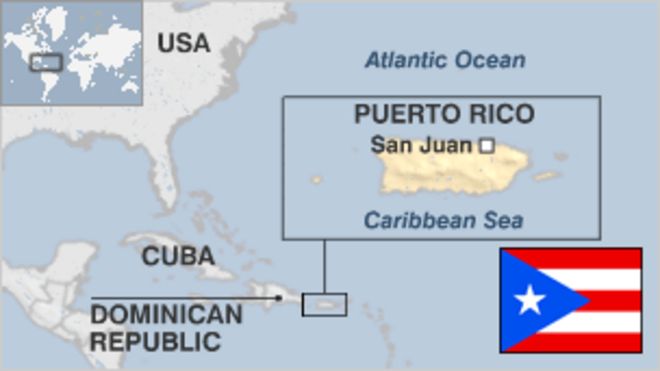 But Puerto Ricans have no representatives in the Senate. They have a presidential commissioner who represents them in the House of Representatives, but this commissioner cannot vote on bills.
But Puerto Ricans have no representatives in the Senate. They have a presidential commissioner who represents them in the House of Representatives, but this commissioner cannot vote on bills.
However, many international institutions treat Puerto Rico as a separate country. Puerto Rico has an Olympic team separate from the US and sends its members to the Miss Universe pageant.
2. Puerto Ricans are American, but…
All Puerto Ricans are US citizens by birth. They hold US passports and can travel to the US mainland at any time.
Unfortunately, Puerto Ricans do not have the same rights as other Americans. They cannot vote in presidential elections, but they can vote for party candidates.
Surprisingly, you can become a dual citizen of Puerto Rico and your own country by obtaining a Puerto Rican Citizenship Certificate. You must be born in Puerto Rico, have Puerto Rican parents, or be an American who has lived in the country for one year.
3. Don’t confuse an archipelago with an island
When people read the name “Puerto Rico” they usually think of one island. In fact, Puerto Rico is an archipelago with many islands.
The main island is called Puerto Rico and includes the capital San Juan. Vieques Island is located 11 km off the east coast of the main island. It is home to over 8,000 people and has dozens of beaches for you to visit.
Culebra is located 15 km north of Vieques and about 70 km from the main island. About 1800 people live on Culebra, but most of the island is uninhabited.
None of the other islands are inhabited. Some of them are nature reserves that can be visited by boat.
4. Puerto Rico is the oldest colony in the world
Puerto Rican facts go way back in history. The Taino people lived on the main island for thousands of years before the arrival of Christopher Columbus in 1493. Although he only stayed on the island for two days, he declared it a Spanish colony.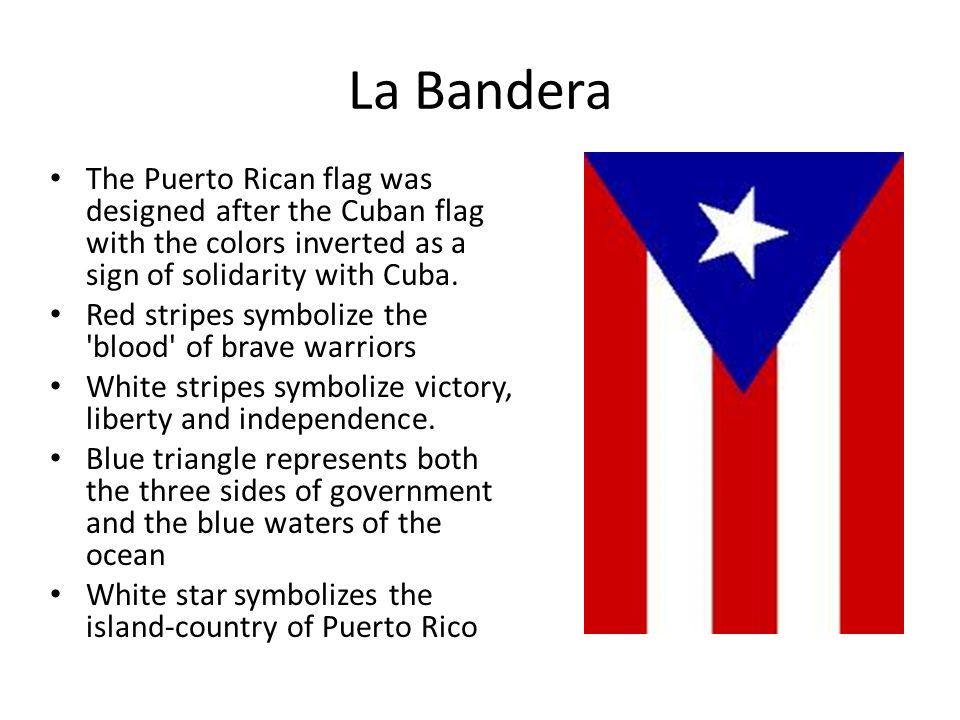
After that, Spain controlled Puerto Rico for a little over 400 years. Spain ceded Puerto Rico to the United States in 1898 years after the Spanish-American War. Since then, the island has been under US control, and some Puerto Ricans refer to it as a “colony” because it is not a separate state.
5. World War II in Puerto Rico
World War II may have taken place in Europe and Asia, but it also left its mark on Puerto Rico. The US military feared that the island would be overrun, so the government spent millions of dollars to defend the island.
Added to this is the restoration of historic castles so that they can be reused. It also built bases and bunkers throughout the archipelago, including Culebra.
When the war ended, the military left their equipment. You can find military tanks at Flamenco Beach on Culebra and explore abandoned bunkers on Vieques.
6. The only tropical rainforest in the United States
Learn about the El Yunque forest by reading the following fact from the list of interesting facts about Puerto Rico. It is the only tropical rainforest in the US natural forest system. With an area of 12,000 hectares, it is one of the smallest forests in the United States.
It is the only tropical rainforest in the US natural forest system. With an area of 12,000 hectares, it is one of the smallest forests in the United States.
However, it is full of natural wonders and exotic wildlife. You can climb mountains over 900 m high and watch parrots and frogs.
7. You can walk along the 321-kilometer beach
Like any Caribbean paradise, Puerto Rico is best known for its beaches. Luquillo Beach is extremely popular on the main island. You can walk several miles on white sand and relax under coconut trees.
If you want to avoid the tourist crowds, go away from the main island. Flamenco Beach on Culebra Island has coral reefs that are ideal for snorkeling and diving. Vieques Island has Sun Bay Beach with crystal clear waters perfect for swimming.
8. You can visit the glowing bays
Another surprise awaits you at Sun Bay Beach. It includes Mosquito Bay, which is home to plankton that emit fluorescent light at night. If you visit this place under the right conditions, you can see how the water glows blue after sunset.
If you visit this place under the right conditions, you can see how the water glows blue after sunset.
You can also visit the glowing Fajardo Bay on the island of Puerto Rico and La Parguera on Lajas, one of the outer islands. You can swim and boat in the water, but do not pollute the water with chemicals or garbage.
9. Puerto Rico has the largest network of caves in the United States
There are more than 200 caves in the Rio Camui area, spread over 400 km. Only a small part of the caves have trails, but you can visit them whenever you want. It is possible to get off the trail and explore the area, although it is necessary to walk in a group to avoid accidents.
10. America’s tallest statue – “The Birth of the New World”
“The Birth of the New World” is an image of Christopher Columbus at the helm of his ship. The statue is made of bronze and has a height of 110 m, which is 17 m higher than the Statue of Liberty.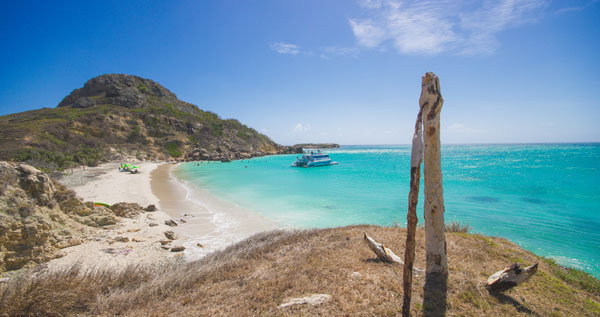
You can visit the statue in Arecibo. You can’t get close to it, but the Arecibo government plans to open a park around it soon.
11. Plaza Las Americas – the largest shopping center in the Caribbean
Plaza Las Americas is 176,515 sq. m with more than 300 stores. Almost every major retail chain can be found here, including JCPenney, Macy’s and Best Buy. If you’re looking for authentic Puerto Rican souvenirs, the mall’s shops sell antiques, art, and ceramics.
12. La Fortaleza – the oldest mansion in America
In 1529, the governor of Puerto Rico, Antonio de la Gama, began to write letters to the Spanish emperor. Residents of San Juan did not feel safe and needed fortifications.
Then the emperor financed the construction of a mansion called La Fortaleza in San Juan. Construction was completed in 1540, but the emperor forgot to issue weapons to the soldiers who were in the mansion. In order not to leave the building unattended, in 1544 the governor moved to the castle and made it his residence.
Since then, La Fortaleza has continued to be used as the residence of the governor. It is open to the public and you can take a 30-minute tour of the gardens and grounds.
13. Old San Juan is different from modern San Juan
San Juan is often mentioned in articles containing interesting information about Puerto Rico. It is often mentioned that San Juan was founded in the 1520s, and this is true.
But not all of what is now San Juan was inhabited. Old San Juan contains the city’s oldest buildings, including La Fortaleza. You can spend the whole day exploring the area, visiting the various shops and wandering among the castles.
14. San Juan is not the only cultural center of Puerto Rico
San Juan is the capital, but it is far from the only cultural center of Puerto Rico. About 140,000 people live in Ponce. The city hosts many festivals throughout the year, including the Genipa National Festival in August.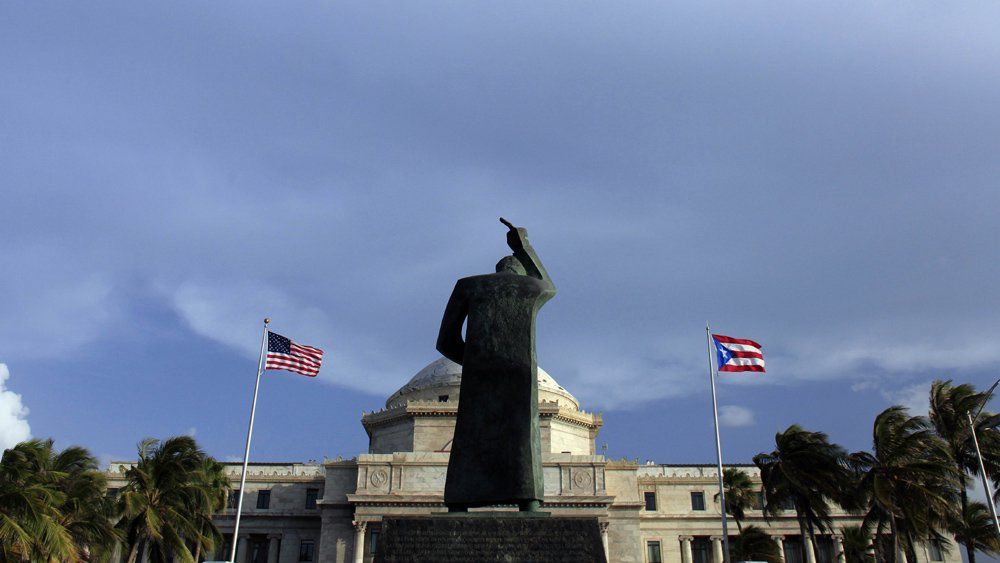
More than 120,000 people live in Caguas. The city has many parks and natural areas that you can visit, including the Byroa River Nature Reserve.
15. Puerto Rican cuisine is a real melting pot
Ask anyone who lives in Puerto Rico what their national dish is and they will tell you that it is arroz con gandules. This dish combines sautéed tomatoes, garlic and onions with rice and pork. You can find many variations of this dish, some chefs even add olives and banana leaves.
In fact, you can find variations on just about any Puerto Rican dish. You can try pasta with seafood, raisins or garbanzo beans. At the buffet you can try battered cod, mozzarella sticks and octopus salad.
16. Taste Delicious Rum
Puerto Rico’s rum industry is valued at around $51 million. Microdistilleries can be found in all major cities, and many restaurants have a list of rums to sample.
You can also organize distillery tours, including the Bacardi distillery in Catagno. Some distilleries allow you to attend mixology and tasting classes, but you may have to pay for this.
Some distilleries allow you to attend mixology and tasting classes, but you may have to pay for this.
17. Don’t Forget the Coffee
Puerto Rican coffee is perhaps the most underrated part of Puerto Rican cuisine. Coffee plantations can be found all over the main island and you can visit cafes for breakfast or afternoon coffee.
Many Puerto Ricans enjoy drinking espresso, which can be bitter and rich. If you want to reduce the bitter taste, you can order a cortado, which combines espresso with fresh milk.
18. Incredible climate all year round
The weather in Puerto Rico is beautiful all year round. The average temperature stays around 26 degrees C for 12 months, but in autumn and winter the temperature can drop.
The rainy season in Puerto Rico lasts from May to November, with an average of 195 mm of precipitation in August. This season coincides with the hurricane season, and if you visit the country during the summer months, you may encounter tropical storms.
19. Christmas is celebrated not only on December 25
Another reason to visit the country in autumn and winter is Christmas. Cities begin putting up Christmas decorations in late October, with official celebrations beginning after the American Thanksgiving. You can take part in church ceremonies, watch parades and cook delicious meals with your loved ones.
The holiday does not end at Christmas. It continues until the Saint Sebastian Street Festival at the end of January. You can enjoy live music and watch dance performances at this event, which is an elaborate street festival in San Juan.
20. Spanish and English are spoken in Puerto Rico
Puerto Rico has two official languages, Spanish and English. Puerto Ricans usually greet each other in Spanish and can communicate in this language. They may switch to English if the conversation is more in-depth.
You need to know the basic Spanish phrases to greet the locals and be safe when traveling.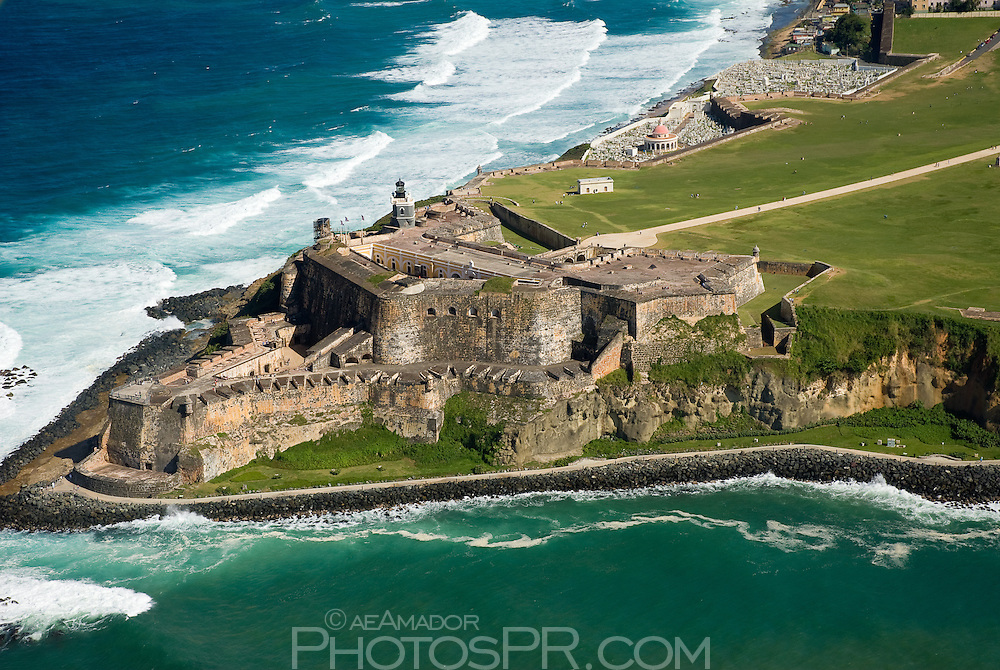 But if Spanish pronunciation seems difficult for you, feel free to use English.
But if Spanish pronunciation seems difficult for you, feel free to use English.
Puerto Rico has a long history of colonization and remains in the United States as a community rather than as a state. But Puerto Rican culture is extremely vibrant. The islands are full of natural wonders, including pristine beaches and sparkling bays.
You can also enjoy rich cuisine and delicious rum and coffee.
Dear Friends! Subscribe to our VKontakte group , where we publish the most interesting and useful articles.
10 facts about Puerto Rico – The Rum Diary
My personal list of the most interesting, unknown and important things that characterize the island.
1. Puerto Rico is not an independent country, not an American state, but a territory controlled by the United States. The United States controls almost all spheres of life on the island, and Puerto Ricans enjoy almost all American rights. Except for the most important thing: Puerto Ricans are not represented in Congress and they do not have the right to vote in presidential elections.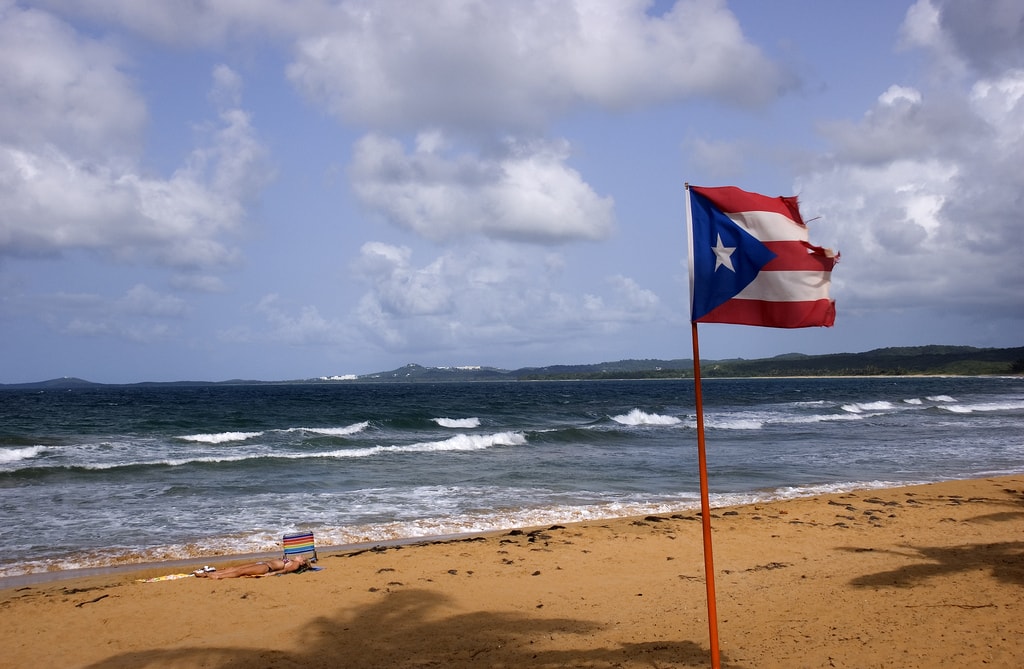 In fact, Puerto Rico is a modern US colony. To travel to Puerto Rico, you need to have an American visa. And if you are a US resident, then any identity card is required to enter the island. A flight to Puerto Rico is the most common domestic flight.
In fact, Puerto Rico is a modern US colony. To travel to Puerto Rico, you need to have an American visa. And if you are a US resident, then any identity card is required to enter the island. A flight to Puerto Rico is the most common domestic flight.
2. Initially, Christopher Columbus called the island San Juan Bautista, and the city in which he founded the port – Puerto Rico (rich port). Over time, these names got mixed up: the island began to be called Puerto Rico, and its capital – San Juan.
3. Puerto Ricans call their island Borinquen and themselves boricua. This term comes from the Indian word “borikén”, which is how the island was called by its native inhabitants – the Taino Indians.
4. The Taino Indians were completely exterminated, their ancestors in our time no longer exist. They were either killed by the conquerors, or died from diseases and viruses they introduced, or died due to unbearable working conditions, extracting gold in mines.
5. Not all Puerto Ricans are black.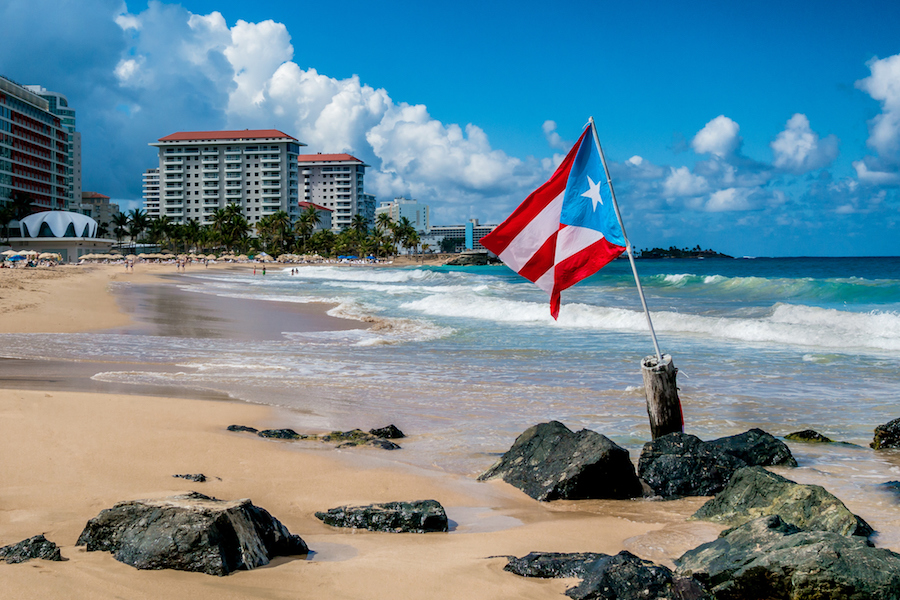 All Caribbean islands have a very complex racial history, and Puerto Rico is no exception. Therefore, a good part of the population has a European appearance: light skin, light, and sometimes even red hair. It depends on the genetic proportions: European, African and Indian.
All Caribbean islands have a very complex racial history, and Puerto Rico is no exception. Therefore, a good part of the population has a European appearance: light skin, light, and sometimes even red hair. It depends on the genetic proportions: European, African and Indian.
6. It was immigrants from Puerto Rico who made salsa a world-famous music. For political reasons, in the post-Soviet space, salsa is associated almost exclusively with Cuba. But it was the Puerto Ricans, who immigrated to el Barrio (East Harlem, New York City) in the 1950s, who played a major role in shaping the sound and feel of the latinidad phenomenon. And it was done in no other way, but with the help of Salsa. Puerto Ricans “sold” the newly minted genre, based on the Cuban son, to the Manhattan recording studio Fania Records. And he thundered all over the world. Salsa, born in New York, reflected the ethnic diversity of the city. But most of the breakout salsa performers, from the Palmeri brothers to Willy Colón and Hector Lavoe, were Puerto Ricans.
7. With the aim of birth control as a means of combating poverty and unemployment, the US government actively used and popularized the method of sterilization in Puerto Rico. By 1965, 35% of Puerto Rican women were sterilized. This is the highest rate of sterilization of the population in the world. Sterilization was free and funded by the US government. Although it was considered voluntary, there are studies confirming that women were denied various types of gynecological care and even assistance during childbirth, in cases of refusing further sterilization. In addition, the population was simply misinformed about the irreversible consequences of this method of contraception. On the island, contraception was actively promoted as a means of freeing women from the shackles of motherhood and their active involvement in the labor force of the industrialization process.
8. Puerto Rico is the world’s fifth largest pharmaceutical production area. 12 of the top 20 pharmaceutical companies are represented on the island. It produces 16 of the 20 top-selling drugs in the US and 7 of the top 10 worldwide.
It produces 16 of the 20 top-selling drugs in the US and 7 of the top 10 worldwide.
9. The Arecibo city telescope until September 2016 was the largest radio telescope in the world using a single aperture (dish). In addition to the long list of important studies that are carried out on this radio telescope, it is one of the few that is used to search for extraterrestrial civilizations. In 2017, Hurricane Maria broke one of the telescope’s antennas and disabled it. But at the moment, his work is almost completely restored.
10. The Cavernas del Rio Camuy cave system is the third longest in the world and the first in the Western Hemisphere. The Flamenco Beach of Culebra Island appears annually in the lists of the ten most beautiful beaches in the world. Castillo San Cristobal is the largest fortress in the New World. And the palace of the President of Puerto Rico, La Fortaleza, is the oldest administration building in the New World, which is still in use today. The bio-illuminated Mosquito bay of Vieques Island is the brightest bio-illuminant bay in the world.
 San Juan Wasn’t Always the Capital City
San Juan Wasn’t Always the Capital City Some of the Streets Have Original Cobblestones
Some of the Streets Have Original Cobblestones
